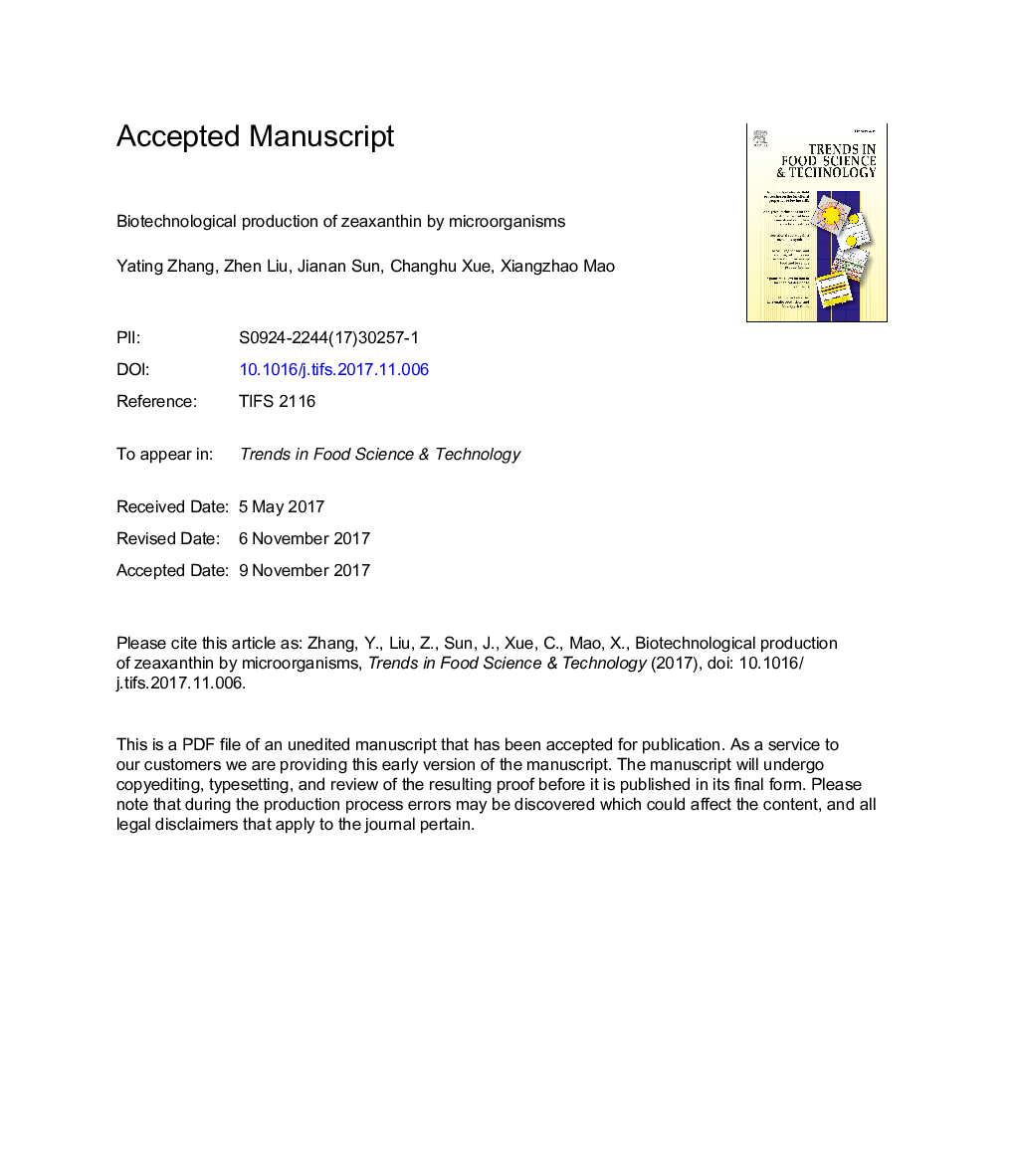| Article ID | Journal | Published Year | Pages | File Type |
|---|---|---|---|---|
| 8428671 | Trends in Food Science & Technology | 2018 | 53 Pages |
Abstract
To date, all the reported wild zeaxanthin-accumulating microorganisms belong to either bacteria or microalgae, while most of the reported engineering microorganisms for zeaxanthin production are Escherichia coli or yeast. A feasible strategy for zeaxanthin production is the use of metabolic engineering to construct a zeaxanthin-accumulating microbial cells factories followed by the optimization of fermentation with the engineered strain. Besides the simple overexpression of the biosynthesizing genes, the dynamic regulation of the constructed pathway has also been used for zeaxanthin production by metabolic engineering. Construction of better microbial cells factories which produce more zeaxanthin will profit from the breakthrough of the following fields: Introduction of higher plant zeaxanthin biosynthesizing genes into microorganisms; Characterization of novel zeaxanthin pathway genes from the wild microorganisms producing high level of zeaxanthin; Deep investigation of the farnesyl diphosphate formation pathway; Construction of microbial host with weak antioxidative capacity.
Related Topics
Life Sciences
Agricultural and Biological Sciences
Food Science
Authors
Yating Zhang, Zhen Liu, Jianan Sun, Changhu Xue, Xiangzhao Mao,
